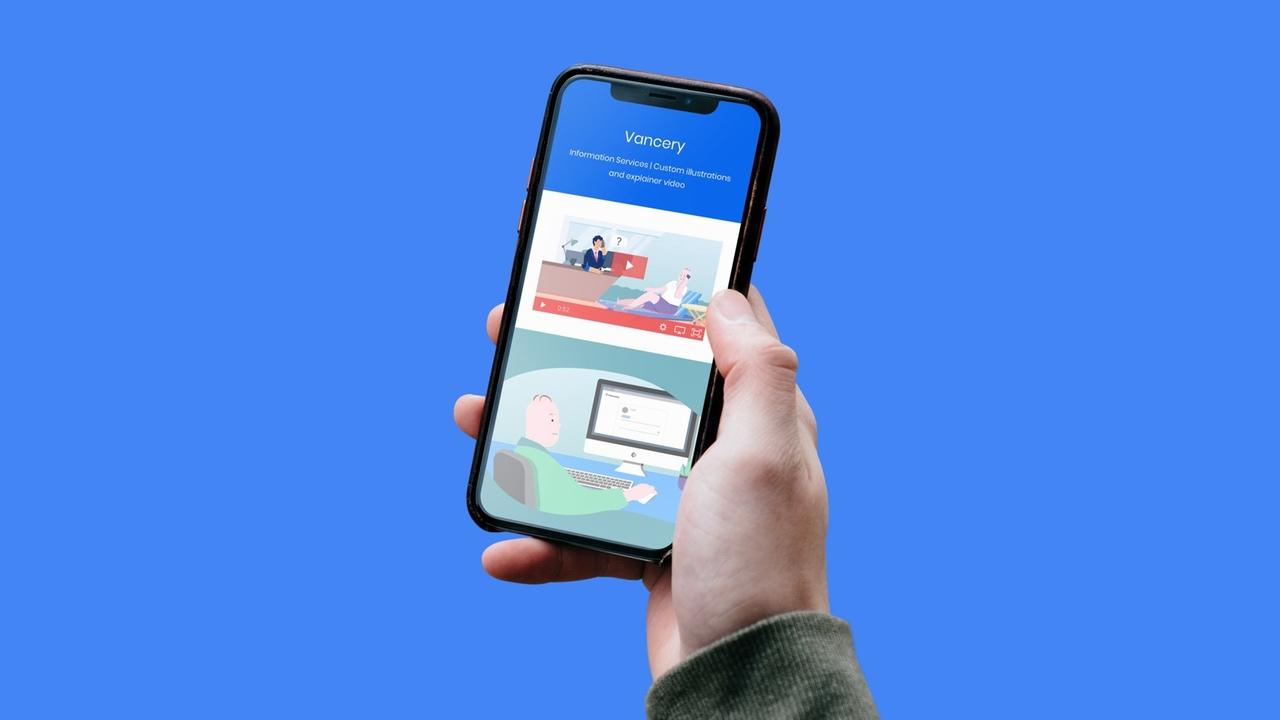6 reasons why growing companies should prioritize design
Jul 31, 2019

Katy Cesarotti | Gallery Design Studio Editor + Copywriter
Growing companies face a lot of opportunities for expansion — which, usually, come with some sort of a price tag. When your marketing team has a limited budget, why should you allocate money to design?
Sleek webpages and exciting graphics aren’t just for big companies and big budgets. When you invest early, in the growing stages of your company, design can be the jet fuel that launches your communications strategy to the next level of success.
1. Clarify processes with design

Design goes beyond touching the outer appearances to improve the performance and clarity of common business processes. As your company grows and add new team members, it will take them time to learn how your group gets work down. Explainer videos take dense information out of the how-to manual and make it visual for new employees. How-to videos even serve as an ongoing resource for other team members who need a refresher.
Other educational applications of design, like sequential emails or e-learning courses, can present technical information clearly. With helpful use cases, easy to follow layouts, and visual metaphors, both clients and employees can master specific processes without stress.
2. Impress investors and future partners
Design functions on multiple levels. It aids literal comprehension and can simplify large sets of data, illustrating complex concepts. In a presentation to investors, you could show a dense table of sales figures and projections, or you could use data visualization to make your gains immediately understood.
Design also functions on a credibility level. It signals your professionalism: Are materials slapped together, or are they polished? Is your presentation clean and easy to read? Consistent fonts, brand colors, and layouts may seem like last-minute, minor details, but they send a message about the level of professional care you’ll bring to the company.
3. Connect with customers
Strategic design can also make viewers feel something. Charming illustrations can ease some of the stress around a high-stakes process, like dealing with money or transitioning to a new technology. Humanize your thought leadership with custom icons and unique colors. Minimalist layouts can bump you into the bracket of elite companies like Amazon, and set customers’ expectations for the service they’ll receive.
When you thoroughly understand your customer, you can craft user-centric design to demonstrate that you can provide what they’re looking for.
A majority of people consider themselves visual learners. Enhance their retention and boost engagement metrics with explainer videos. Motion graphics will hook their attention and make your messaging more memorable.
4. Translate the value of new products
“Blue ocean” startups offer a product that a customer has never seen, or solve a problem they didn’t even know they had. With a cutting-edge, innovative products and services, you need to capture the user’s attention long enough to explain to them why they need it.
At the top of the funnel, customers don’t care about what goes on under the hood — the technical ins and outs of how your service works. Instead, they want to know how your service will help them do business smarter, faster, or more efficiently. Use design to highlight this narrative, connecting the dots of the user story with case studies or testimonials.
Once they’ve neared the bottom of the funnel, then B2B customers are ready to invest time into learning about specific features and in-depth research. 75% of B2B buyers say they would share contact information in return for access to a downloadable whitepaper. Use thoughtful design to elevate your whitepapers into compulsively readable — and convincing — marketing tools.
5. Get a website that converts
Your website is debatably your most valuable marketing asset. 89% of B2B customers do research online before they buy. When we have questions, we all turn to Google to answer them — especially when we always have our phones in hand. Your website is your first impression for a customer and the hub of all knowledge about your product or service.
Does your website look welcoming, professional and secure — or does it look like it’s trying to steal someone’s social security number? Is it easy to navigate to the page you’re looking for, or is it frustrating to use?
Intuitive website design is a major opportunity to win — or lose — potential customers.
6. Grow your influence, not your headcount.
Especially during a company’s growth phase, you might not be able to take on new employees with graphic design and motion graphics and strategy and copywriting skills. Maybe your workload isn’t predictable enough yet or the overhead is daunting.
Without committing to growing a head count, working with a creative partner can deliver the polished, on-brand marketing collateral you need.
About Gallery Design Studio
We're passionate about helping B2B businesses with their ongoing marketing communication design needs. We help our clients transmit complex information clearly, concisely and in a visually engaging way. Relentlessly curious, we're inspired by experimentation, and always looking for better ways to serve our clients.
We’ve collaborated with transformational businesses, both startups and more established companies such as The NYC Law Department, CIT Bank and Questback.
Our services:
- Communication and Marketing Design
- Video & Animation
- Web & App design (UX/UI)
- Digital Customer Experience Design (DCX)
Need creative support yesterday? Learn more about how we can help.
About the Writer
Katy Cesarotti is a copywriter at Gallery Design Studio. Katy believes that, with clear and concise copy, innovators can spark emotion and drive action in their readers. She’s written for magazines, blogs and cutting-edge startups.







